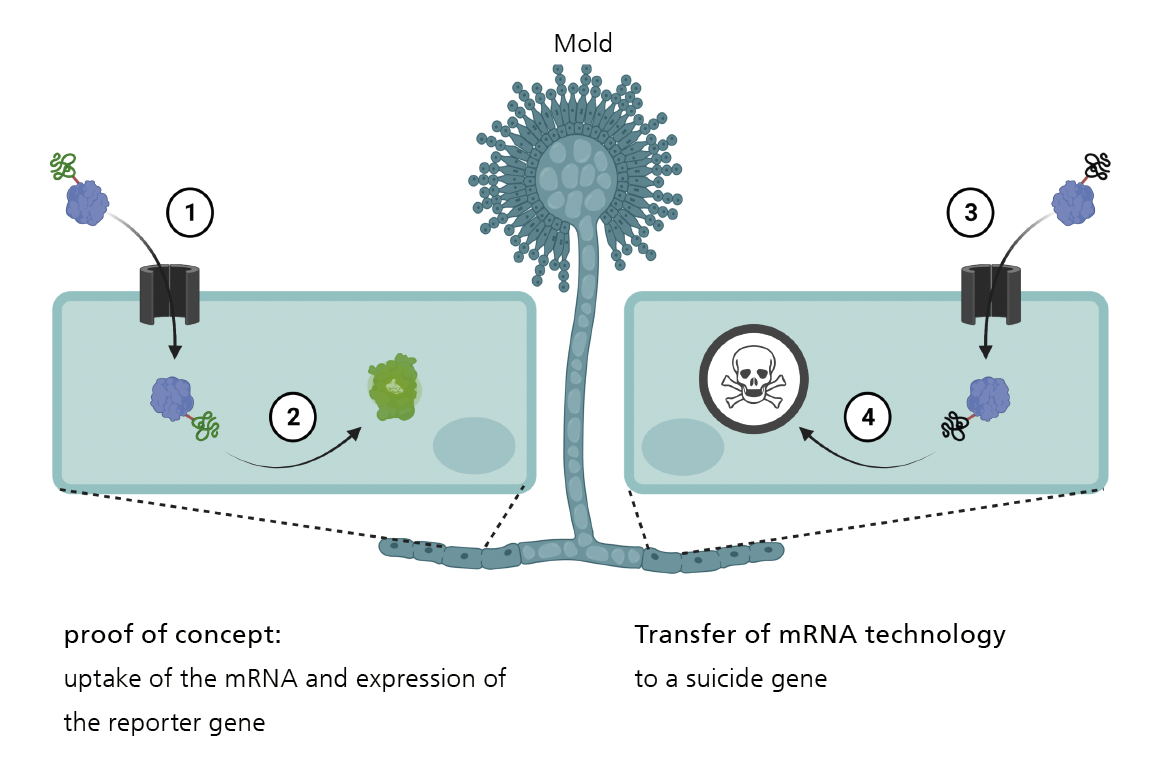Fungal diseases of crops are widespread and cause about 20 percent of crop losses worldwide. The use of pesticides leads to the accumulation of harmful substances in soil, groundwater, plant foods and consequently also in humans and animals. The RiboZid project aims to develop an alternative to pesticides that is compatible with humans and the environment and is based on mRNA technology.
RiboZid – mRNA as biobased fungicide to control phytopathogenic fungi
Fungal diseases of crops are widespread and cause about 20 percent of crop losses worldwide. Climate change and monocultures further promote the spread of fungal diseases. Until now, mainly chemicals are used to protect plants against phytopathogenic fungi which however leads to pesticide accumulation in soil, groundwater, plant foods and consequently, also in humans and animals. Pesticide residues pose a constant invisible threat to human health, particularly through hormone-like substances that can impair fertility and increase cancer risks.
Compatible pesticide alternative
The RiboZid project aims to develop an alternative to pesticides known to be harmful to health and the environment and to create a solution that is compatible and sustainable for human beings and the environment, while at the same time, food supply and health of the world's growing population is ensured.
The RiboZid approach is based on the hypothesis that plant-damaging fungi can be effectively controlled by incorporating an mRNA as a biobased plant protection agent. The objective is therefore to develop an mRNA, whose protein product selectively combats the fungus but does not affect the plant. Taken up by the fungal cell, the mRNA information is translated into a protein that has a lethal effect on the fungus but does not affect plants, humans and animals. Like the human cell with corona mRNA vaccine, the fungal cell itself forms the protein product after absorbing the mRNA, which in this case, however, leads to the death of the plant pest.
Proof of concept with reporter mRNA
The ascomycete Aspergillus niger has been selected as the test organism. This mold fungus is ubiquitous in the soil and often leads to the spoilage of plants and food due to the rapid spread of airborne spores. To establish the method, a reporter mRNA is first designed that encodes the fluorescent protein mNeonGreen, a small, monomeric, yellow-green fluorescent protein that can easily be detected microscopically and spectrophotometrically. The mRNA is generated by in-vitro transcription and applied to cultures of A. niger. If translation takes place after uptake of the mRNA, the cells of A. niger glow with green-yellow color due to the produced reporter protein (Fig. left). Subsequently, the same procedure will be applied to the suicidal mRNA. If translation is successful, the fungal cell is killed by the toxic protein product (Fig. right).

Project information
Project title
RiboZid – mRNA as biobased fungicide to control phytopathogenic fungi
Project duration
October 2022 – September 2023
Project coordination
- Fraunhofer Institute for Interfacial Engineering and Biotechnology IGB (Prof. Dr. Susanne Bailer)
Funding
Fraunhofer
 Fraunhofer Institute for Interfacial Engineering and Biotechnology IGB
Fraunhofer Institute for Interfacial Engineering and Biotechnology IGB